Table of Contents
Do you know what all successful athletes have in common? A quality training plan. Thanks to it, they are able to gradually improve and meet their sporting goals. But you don’t have to aspire to be Mr. Olympia or prepare to be the hero of the new Marvel movie for a training plan to help you achieve the physique you desire. Bodybuilders and actors preparing for a role have highly specific training and often very time-consuming training programs that are not worth emulating for many reasons. In fact, the training plan should suit your needs and time capabilities. In today’s article, we’ll show you how to put together a training plan so that it has a sound foundation and keeps you moving forward.
You will read about the following workouts:
What is a training plan and what is it good for?
A training plan can be compared to a recipe you use for preparing your favourite dish. It contains certain ingredients (exercises), their quantity (number of repetitions, sets and load), cooking time (length of the workout) and also the procedure (different phases of the workout) that must be followed to cook the meal (achieve the goal).
As with the recipe, you can adapt it to your own preferences. This will create a customised training plan that serves as a springboard for muscle growth, strength, weight loss and other fitness goals.
According to the plan, you will know exactly which exercises to do on a given day, what load to choose and how many repetitions and sets to do. This will give your workout a clear structure, which will change slightly over time depending on progression and other factors.

What are the benefits of a training plan?
If you don’t just go to the gym to chat with others and you care about results, a workout plan may be exactly what you’re looking for. What can it do for you?
1. You will exercise systematically
Thanks to the plan, you won’t just randomly switch from one gym machine to another, putting on what feels like an acceptable load and hoping it will give you the results you want. Your workout will finally make sense and move you closer to your goals.
2. Make your time at the gym more efficient
You will no longer arrive at the gym not knowing what to work out for the day and spend more time thinking than actually working out. With a plan, you’ll know what to expect and get straight to it. You’ll make the most of your time in the gym because each exercise, repetition count and other variables will bring you closer to further progress.
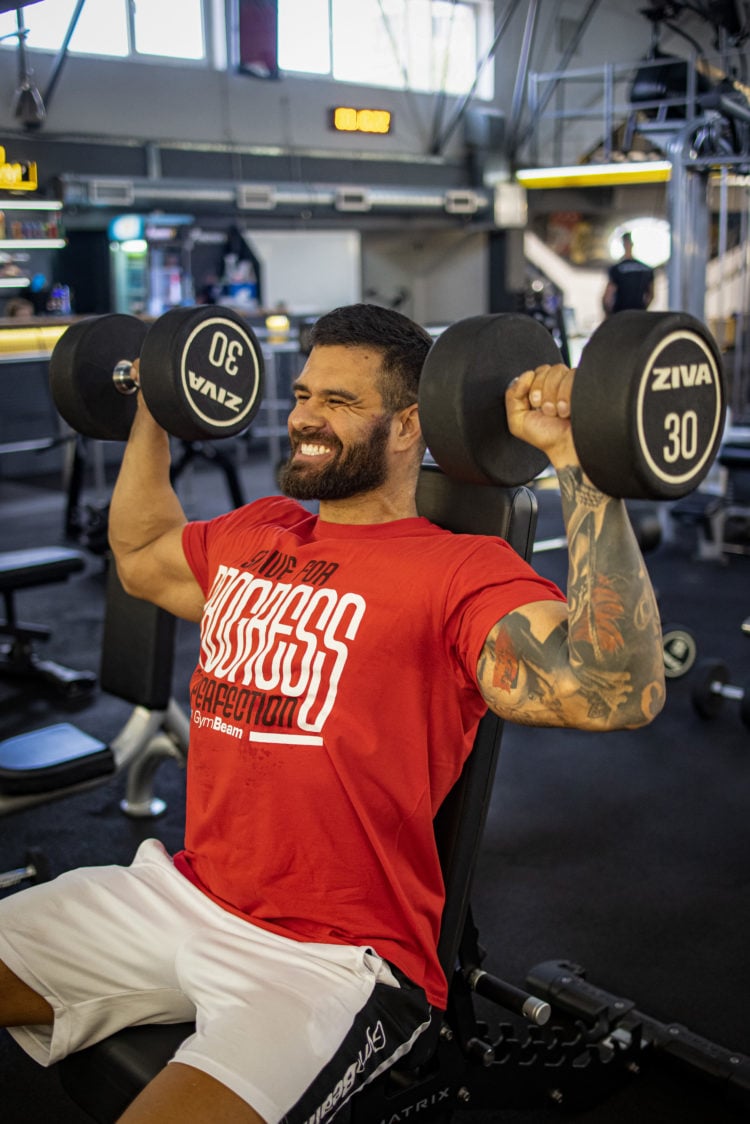
3. You will perform all the necessary exercises
You won’t just be doing your favourite exercises over and over again, but you’ll also include the ones you’d otherwise prefer to avoid. The uncomfortable exercises are often the ones that lead you to the best results. With a precise plan, you won’t have much room for excuses and wondering about what you need or don’t need to do. Everyone prefers to practice what they are good at rather than focus on improving their weaknesses. But with a plan, you can’t avoid it and can move forward.
4. You will be consistent
Your training won’t change radically from week to week and you’ll finally maintain some consistency. You’ll be doing a few exercises conscientiously for a longer period of time, which will also bring you results. In addition, you can evaluate what works best for you in the long run.
5. Reduce the risk of overtraining
You will not mindlessly perform the same exercises every day. Instead, you’ll find which days to train your legs, arms, or back in your plan to give your body enough time to recover. This will make it easier to avoid overtraining and reduce the risk of injury.
6. You will be more motivated
With the new training plan, you will get fresh motivation to train. You’ll be able to count on it in your free time and there won’t be so many opportunities to make excuses. I’m sure you’re wondering yourself what the new program will do to your body.
10 steps to create a quality training plan
In order for your training plan to truly be a recipe for success, you need to take it step by step and think through every ingredient. However, with our guide, anyone can do it.
1. What are your requirements and goals?
First of all, try to be clear about what you actually expect from the training. Is it weight loss, strength or muscle mass growth, or perhaps improved muscular endurance? Whatever your goal is, write it down. This is what determines the choice of exercises, number of repetitions and other training variables.
You can use the SMART technique when setting a goal. According to SMART, your goal should be:
- Specific: What exactly do you want to achieve? For example, you want to lose 5 kg in 5 months.
- Measurable: How will I measure progress? Maybe you can go to an InBody once a month or weigh yourself at home and take measurements.
- Achievable: is it really possible to achieve your goal? Losing 1 kg per month is definitely realistic.
- Relevant: does your goal fit into your lifestyle, taking into account your workload, family and other responsibilities and health? All conditions will never be ideal, but you know you can do it now.
- Time-bound: in how long do you want to achieve your goal? In this case, it is 5 months. [1]
When you specify your goal, also think about your performance history, any injuries sustained, and exercise experience. However, if you don’t have a specific base and just want to feel good and have order in your training, there’s nothing wrong with that. In this case, however, it’s harder to create a specific program and will more likely be sensation-based, where trial and error will determine what works best for you.
If you want to learn how to set goals step-by-step, read our article How to Set a Goal and Actually Achieve It??

2. How many times a week and for how long do you want to exercise?
Take a diary and think about how much time you can realistically devote to training? Don’t forget to include the journey to and from the gym, time to change, shower, etc. Unless you are a professional athlete, it will hardly be in your capacity to submit everything to training and to overhaul your whole life.
Try to calculate how much time you have after all your daily duties are done.
- Can you exercise 4 times a week for an hour? Great.
- Can you find just 40 minutes in your busy schedule to exercise 3 times a week? That’s okay, too.
The main thing is to take this into account and not write down two-hour workouts that you have no hope of completing. It’s a bit more difficult if you work in shifts for example and each week is a bit different. In that case, adjust your workout times as needed each week. The goal is to fit your workouts as closely as possible into your current lifestyle. It has to be sustainable for you in the long term, otherwise you won’t be able to stick to it for very long.
You might be interested in these products:
3. Schedule individual sessions into the days you can train
Now that you’ve found time slots for training on specific days, it’s time to determine what and when you’re going to train. This depends mainly on how many times a week you can go to the gym. However, when you space out your workouts throughout the week, also think about giving your muscles enough time to recover after your workout.
Full regeneration of the muscles occurs on average in 24–72 hours. Be careful not to have a leg workout on Sunday and then on Monday. Remember that the hardest workout should ideally be after the longest rest. The hardest workout should typically be on the Monday after a more restful weekend. [2-3]
There are a number of ways to divide the training within the week. Let’s take a look at the most common ones.
1. Full-body workout
If you only have time to work out 2–3 times a week, a full-body workout is ideal. Plan exercises for both the upper and lower half of your body. Think especially about the larger muscles such as the back, chest, glutes and legs. The basis will be complex (multi-joint) exercises such as deadlifts, squats or bench press, which involve almost the whole body. Such a workout is also suitable for beginners who do not need such specific training, but can focus on basic exercises.

2. Split upper and lower body workout
With a training frequency of 3 times a week or more, you can alternate between upper and lower body. In the case of 3 training sessions per week you will do 2 workouts for your back, arms and chest and 1 workout for your abs, butt and legs. The very next week you switch it up. This way you will have done the same number of upper and lower body workouts within a month. However, if you train 4 times a week, it works out nicely to 2 workouts for the upper and 2 for the lower body.
3. AB split training
If you can train more often, at least 4 times a week, you can split your workouts into AB splits. This way you can divide your body parts into two groups. This will ensure that you train each part 2 times a week, which is considered a great foundation for muscle growth, strength and overall progression. You don’t just have to stick to the upper and lower body split, but in one workout you can work out your biceps and then you can train your thighs. [19]
Example of AB split:
- A: Back, shoulders, buttocks, hamstrings, calves
- B: Biceps, triceps, breasts, abdomen, quads
AB split during the week | Variant 1 | Variant 2 |
|---|---|---|
| Monday | A | A |
| Tuesday | B | B |
| Wednesday | Day off | Day off |
| Thursday | A | A |
| Friday | Day off | B |
| Saturday | B | Day off |
| Sunday | Day off | Day off |
4. Push and Pull Training
It is also popular to split the training plan into push and pull exercises and add leg workout separately. Thus, you will have 3 different workouts interspersed throughout the week. It will give you plenty of room for recovery, even if you train 5–6 times a week. This is how bodybuilders who train almost daily and want to achieve maximum results often divide their workouts. This method suitable for more advanced athletes. [4]
Divide the parts according to whether they engage in push or pull movements. The third workout then covers the legs and abs.
An example of Push-Pull training:
- Push training: chest (bench press), shoulders (overhead press) and triceps (triceps press)
- Pull training: back (push-ups), biceps (biceps curls) and forearms (wrist extensions)

4. Choose appropriate exercises and organise them
Now that you’ve divided your parts into the different training days of the week, here’s the fun part. You can choose specific exercises. However, be careful not to fill your workout schedule with unnecessarily complicated exercises that your favourite Instagram influencer just promoted. The phrase, “There is beauty and strength in simplicity,” applies to your workout plan as well.
How to choose exercises for your workout?
- Build your workout around basic exercises such as squats, deadlifts, lunges, bench press, shoulder presses or bicep curls.
- Choose 2–4 exercises for each muscle group. Include both complex (multi-joint) and isolated (single-joint) exercises. [5]
- In the case of smaller muscles, such as the biceps, fewer exercises are generally sufficient. [6]
- Add unilateral exercises (on one limb) to focus more on exercising the left or right limb separately. These include Bulgarian squats, lunges or biceps curls with a barbell.
- Combine exercises with free weights (dumbbells, barbell) and on gym machines (cable machine, peck deck).
- Before the main part, prepare your muscles for the load with a warm-up, which usually includes joint mobilisation and body-weight exercises.
- Always include the most technically demanding exercises at the beginning of your workout. Most often these are complex and those that load large muscle groups (back, legs).
Example of appropriate exercises by body part
Targeted parts | Exercises |
|---|---|
| Shoulders | Barbell press, dumbbell raises, Arnold press |
| Back | Barbell bent over rows, wide grip pull-up, cable pull-downs, dumbbell bent over rows |
| Biceps | Barbell biceps curl, hammer curls, cable bicep curl |
| Triceps | Overhead pull-downs, dumbbell kick-back, lying tricep extension |
| Chest | Bench press, dumbbell pullover, peck-deck fly |
| Abs | Supine alternating arm/leg raise, plank, hanging knee raises, Russian twist |
| Glutes | Back squats, sumo deadlift, hip thrust, lunges |
| Thighs | Front squats, Romanian deadlifts, machine curls, leg extensions |
| Calves | Standing barbell calf raise, machine seated calf raises |
5. Choose the number of reps, sets and load according to your goal
In this step, we return to your stated goal. The number of workouts per week, the division of the parts or the choice of exercises can be the same for weight loss and muscle building. The game changer in this regard is the number of reps, sets and load. It is these variables that are adjusted depending on what you want to achieve with your training.
When selecting a load, a percentage of 1RM (one-repetition maximum) or 1 repetition with maximum weight is commonly used. This is the highest weight you can lift 1 time while maintaining proper technique. You should have no strength or energy left for the next repetition. The 1RM is then used to determine how heavy your weights should be in your workouts. It is given as a percentage of 1RM (for example, 70% of 1RM). If your 1RM for bench press is 100 kg, then 70% of 1RM is 70 kg. [7]
Read more about how to figure out your 1RM in our article How Much Weight to Lift for Muscle Growth, Strength or Weight Loss?

What weight, number of reps, sets, and duration of rest should I choose based on my goal?
1. Goal: Strength growth
It probably won’t surprise you that the primary focus for strength growth is primarily lifting heavy weights that are performed in a small number of reps. This makes for the most neuromuscular adaptations that lead to strength growth. [8-9]
- The greatest effect is achieved by a load in the range of 80-95% of 1RM with 2–6 repetitions performed in 4–6 sets (advanced athletes perform more sets). Longer pauses are then added between sets, usually between 90 seconds and 4 minutes. However, 2 minutes or more is used in common practice. [8, 10]
If you are interested in the role of heredity in strength, read the article How Genetics Influences Muscle Growth and Strength? At-home DNA Tests Help Reveal Your Natural Potential.
2. Goal: Muscle growth (hypertrophy)
Muscles require a sufficient stimulus for their growth, which induces training adaptations in them. According to studies, this occurs mainly in the middle load and repetition range. However, it is not necessary to stick stubbornly to the same numbers. The total volume of work (load x number of reps x number of sets) is crucial for building muscle. So, lower weight (< 50% of 1RM) and higher repetitions (12-30) or sets can also work. [11]
- For muscle growth, the most commonly recommended load is in the range of 60-80% of 1RM with 8–12 repetitions trained in 4–6 sets (advanced athletes usually train more sets). Breaks between sets typically last 1–3 minutes. [8]
If you want to learn more about how to best support muscle growth through diet and training, read our article 10 Nutrition and Training Tips for Maximum Muscle Growth.
3. Goal: Muscle endurance
Muscular endurance, or the ability of a muscle to repeatedly overcome or inhibit non-maximal resistance without reducing the efficiency of movement, is best supported by training with lower loads and higher repetitions. This will help the muscles learn to use oxygen more efficiently, which is crucial for endurance. Runners, cyclists, swimmers and other endurance athletes especially benefit from this.
- Typically, a load of less than 60% of 1RM and performing 15 or more repetitions performed in 2–6 sets is recommended. Shorter pauses (<1 minute) between sets are sufficient. [8, 12]

4. Goal: Weight loss
If you want to lose weight or sculpt your figure, you might expect us to recommend doing hundreds of reps with a light weight to promote local fat burning. This idea is unfortunately wrong. The foundation of successful weight loss remains a caloric deficit, which you achieve through diet and a well-set training plan. Strength training is then a tool for maintaining muscle mass. It will also help you burn extra calories, increase your calorie deficit and accelerate weight loss. [13]
The best way to maintain or even grow muscles during weight loss is to show them how much you need them. The best way to do this in training is with a big enough burst that you’re close to muscle failure at the end of the set. Thus, values similar to those for muscle hypertrophy are commonly recommended for weight loss. However, slightly smaller weights with higher repetitions can also work well. [14]
- To maintain and grow muscle mass during weight loss, the most commonly recommended load is in the range of 60-80% of 1RM with 8–12 repetitions trained in 4–6 sets (advanced athletes usually perform more sets). Breaks between sets typically last 1–3 minutes. [8]
If you want to learn more about why strength training is important for weight loss, read our article Diet, Cardio and Strength Training. What’s Best for Weight Loss?
Recommended load, number of repetitions, sets and rest period according to your goal
Training goal | Number of reps | Number of sets | Rest duration | |
|---|---|---|---|---|
| Increase in strength | 80–95% | 2–6 | 4–6 | 90 seconds–4 minutes |
| Muscle mass growth (hypertrophy) | 60–80% | 8–12 | 4–6 | 1–3 minutes |
| Muscular endurance | >15 | 2–6 | ||
| Weight loss | 60–80% | 8–12 | 4–6 | 1–3 minutes |
Learn more about how many reps to do and why in our article How Many Reps Is Best to Do If You Want to Lose Weight or Gain Muscle?
6. Adjust your training over time
If you train for a few weeks according to the values you set according to the previous point, you should expect your body to adapt to this load. You will notice this, for example, when the workout is less demanding and your muscles don’t ache as much as they did at the beginning. If you continue with the same workout without any change, you will most likely experience stagnation in terms of muscle growth and strength. Not to mention that perhaps no one enjoys working out the same routine over the long term.
How to prevent training stagnation? Discover the principle of progressive overload
The principle of progressive overload means systematically and regularly increasing the intensity of the training in order for your body to adapt and improve in terms of performance. It suggests that you should modify your training by increasing the weight or the number of repetitions to give you a new stimulus to improve. [14]
How to modify your training for the best results?
- Try increasing the weight, number of reps or intensity by no more than 10% each week.
- You should not sacrifice proper technique or risk of injury by lifting higher loads.
- You don’t have to increase the weight or number of reps every week. If you don’t feel up to it, feel free to keep the same load.
- You can also make a change in the choice of your exercises, which will in turn be a new stimulus. However, it is not advisable to exercise completely differently every time.
- Try practising a more challenging version of the exercises. For example, if you find classic push-ups easy, try them with a weighted vest.
- Try supersets (2 exercises combined) or gigantic sets (4 or more exercises combined). In this advanced method, you skip the pause and go straight to the next exercise. [14-15]
The important thing to remember is that you cannot push weights and training indefinitely. That’s why a cycle (4–6 weeks) should be followed by a deload week, in which you take the intensity and load off the exercise. Thanks to this, the adaptation mechanisms will manifest themselves again.
However, you can also modify your training if it doesn’t suit you, is too demanding or you can’t keep up time-wise. The important thing is that you can stick to it long-term, it doesn’t interfere with your day-to-day functioning and helps you achieve your goals. However, don’t expect to see visible results after the first week. Everything takes time.
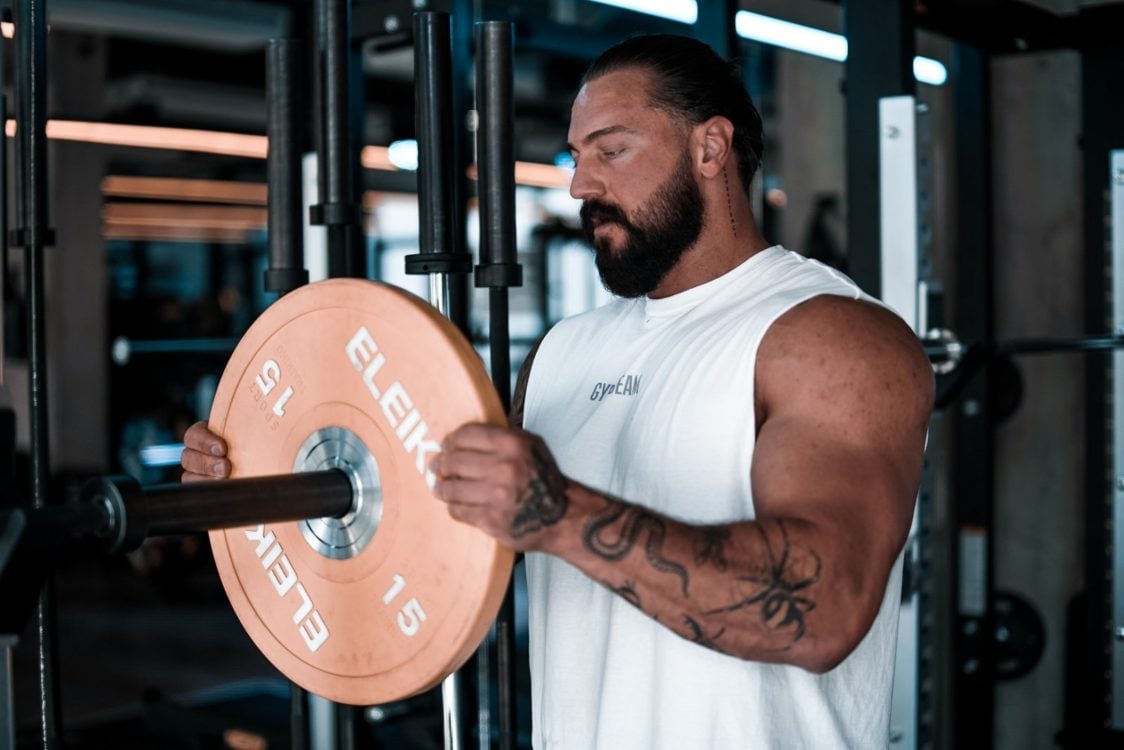
7. Enhance your workout with an advanced training method
When you’re already at home in the gym and need a change in your workout, surprise your muscles with the advanced training method. The workout will be more fun and you’ll give your body a boost again.
- Ascending pyramid scheme: With each set, you increase the load while decreasing the number of reps.
- Descending pyramid scheme: With each set, you decrease the weight and increase the number of reps.
- Drop set scheme: You gradually add weight until the point where you can’t handle any more weight for the selected number of reps. At that point, you lower the load and immediately (without pause) perform another set of more reps.
- Change of pace: you can perform an exercise at a slower pace or add endurance at a certain stage. When squatting, go down for 3 seconds, stop at the lowest position for 2 seconds and come back up at normal speed.
- Negative repetition: during an eccentric contraction (the muscle stretches), try to decelerate or slow down the movement. An example is a decelerated downward movement during a biceps curl. [14-16]
8. Keep in mind sufficient regeneration and rest
Don’t forget to take into account the need for rest in your training plan. It is not necessary to go 100% all the time with the idea that this is the only way you will get results. Feel free to include a deload week once every month or two, during which you reduce the load, the number of reps and even the number of sets. This will give you some rest and the next week you’ll probably notice that you’re doing better strength-wise. [17]
Also remember that full muscle regeneration after a strength load occurs in about 24–72 hours. Due to the time required for recovery, it seems advisable to exercise one muscle part about 2 times a week. [18]
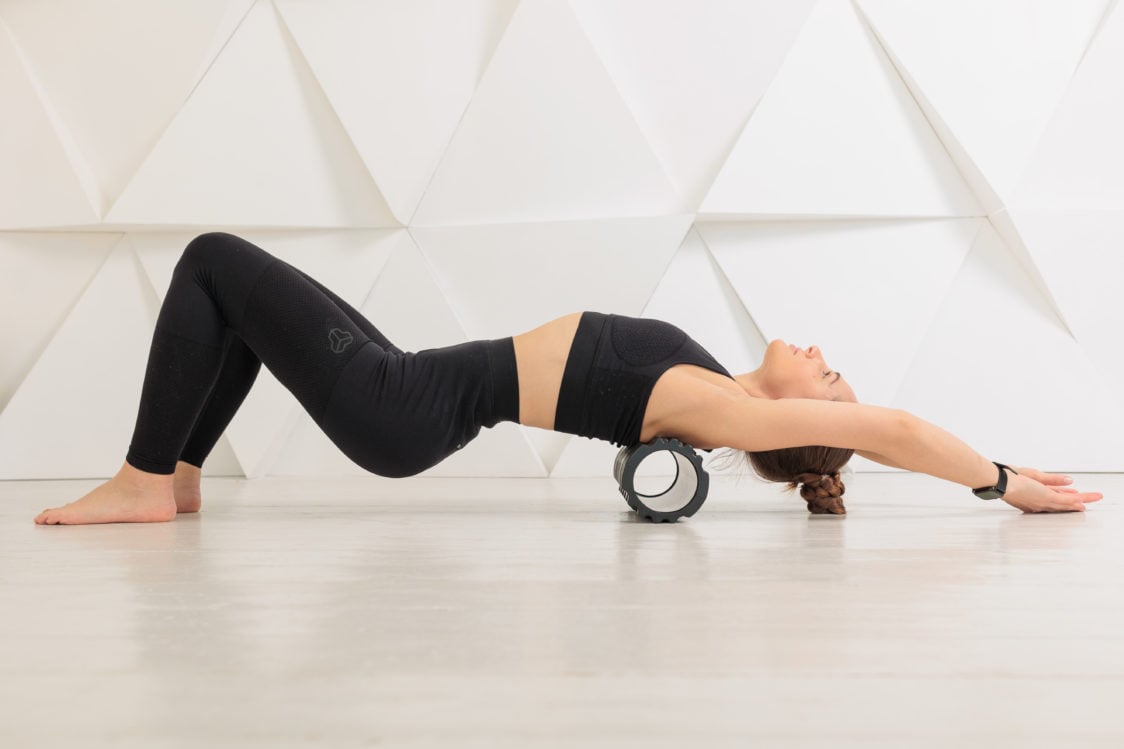
9. Support your results with nutrition
Supplying your body with all the nutrients and energy it needs through your diet is crucial not only for performance in the gym, but also for muscle growth, recovery and overall health. Therefore, think about an adequate intake of proteins, carbohydrates, fats, vitamins, minerals, as well as fluid intake. A well-adjusted diet together with a quality training plan will create an unbeatable duo.
You can calculate the right amount of energy, protein, carbohydrates and fat for your goal with our energy intake and macronutrient calculator.
You can also support your performance in the gym with nutritional supplements:
- Pre-workout stimulants usually contain caffeine, beta alanine, taurine and other substances that will stimulate you, help you prepare for the workout and give you a better physical performance.
- BCAA are essential amino acids that the body can use as a source of energy during sports activity. Thanks to this, they can contribute to protecting muscles from being burned for energy during very demanding and long training sessions.
- FueIntra Workout sports drink contains a blend of carbohydrates, amino acids, magnesium and vitamin B6, which provides the body with energy and other necessary substances during sports. This allows you to train longer and harder.
- Creatine can support physical performance through ATP regeneration, especially during short consecutive intervals of intense training. It will therefore help with strength performance.
- Protein powder assists with post-workout protein intake and fast muscle recovery.
You can read more about supplements for athletes in our article Basic Supplements for Exercise and How to Choose Them? You can also discover how to put together a diet for muscle growth in our article What to Eat and How to Exercise to Finally Gain Muscle?
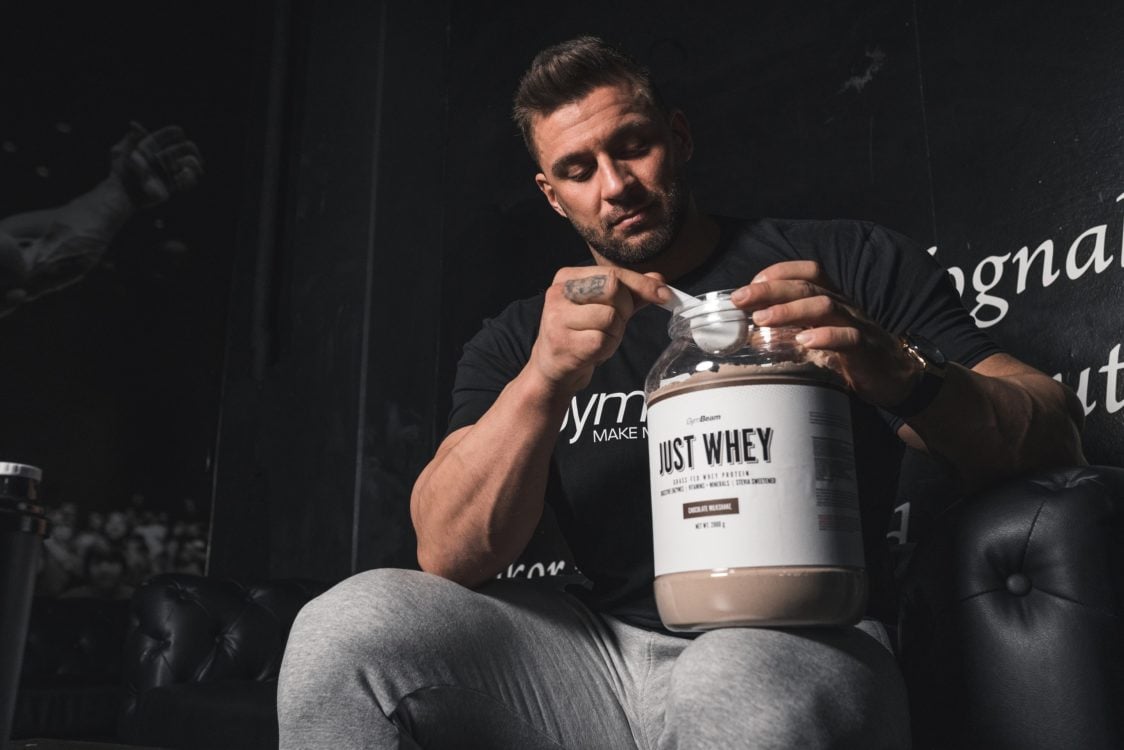
10. If you don’t follow the training plan once, nothing will happen
Having a fancy training plan is great, but it definitely shouldn’t start running your life. For example, if you don’t have your day, feel free to skip a workout or just train as you feel and don’t beat yourself up for not following the plan 100%. You won’t lose any of your results right away, and you might feel better the next day and pick up where you left off. The same goes for women who may feel weaker and more tired at certain stages of their cycle. They shouldn’t be so hard on themselves during this period, and if they don’t feel like a strenuous strength training session, they can swap it for a yoga class, stretching or a walk.
No harm is done even if illness or anything else takes you out of the game for a while. When you return, there’s no need to rush things and get right back into training. Rather, start slowly and you’ll see that your muscle memory will soon bring you up to your pre-pause level.
You can learn more about how to take care of yourself not only physically in our article Self-Care: How to Take Care of Yourself and Be Happier in Life.
Example of a training plan
Let’s take the example of a man who returns to exercise after a long period of time and primarily wants to gain muscle.
- He has previous experience with strength training and knows that he gains muscle quite easily. Specifically, he has set a goal that he would like to gain 6 kg per year, especially in active muscle mass. He is counting on the fact that he will probably not be able to avoid some fat gain while gaining muscle. Every month, he will go for InBody measurements, which will show the current amount of muscle and fat in his body.
- Using the calculator, he calculates his energy and nutrient intake. He then adjusts his diet accordingly.
- He thinks about how much time he has to exercise and gets to 4 workouts a week of 75 minutes. He will train his upper body 2 times (shoulders, back, chest, biceps, triceps) and lower body 2 times (glutes, thighs, calves, abs).
- Choose your exercises for each workout (see table).
- First, measure your current maximum load and adjust your load accordingly. It will calculate your working weight at the lower end of the hypertrophic numbers, 60% of 1RM. The load will then gradually increase to 80% of 1RM each week as you progress.
- He will keep the number of reps at 8 at the beginning and will eventually increase it to 12.
- He will do the same with the sets, starting at 4. He’ll put a break of about 2 minutes in between.
- He will incorporate a deload week every 4th week to in turn support the adaptation processes.
- Before each exercise, he will first warm up with 1-2 sets of lower weight (except for abdominal exercises).
Training/Time off | Exercises | Load, number of sets and reps | |
|---|---|---|---|
| Monday | Lower body + abs training | back squats, deadlifts, hip thrusts, leg extensions, barbell ankle raises, hanging knee raises, plank (30–45 seconds), Russian twist, bench sit-ups | Legs + butt: 60% of 1 RM, 4 sets of 8 reps with 2 min. break Abdominal exercises: 4 sets of 10 reps (plank) with 1 min. break |
| Tuesday | Upper body training | Barbell bent over rows, overhead pull-downs, bench press, peck-deck, barbell shoulder press, dumbbell fly, dumbbell triceps extensions, dumbbell kickbacks, barbell biceps curls, hammer curls | 60% of 1 RM, 4 sets of 8 reps with a 2-minute break |
| Wednesday | Time off | ||
| Thursday | Lower body + abs training | barbell backward lunges, Romanian deadlifts, leg press, leg extensions machine calf raises, tuck-ups, side plank (30–45 seconds each side), reverse crunches, scissors | Legs + buttocks: 60 % of 1 RM, 4 sets of 8 reps with 2-minute break Abdominal exercises: 4 sets of 10 reps (plank) with 1-minute break |
| Friday | Upper body training | reverse Peck-Deck, dumbbell bent over rows, flat bench dumbbell fly, cable chest fly, Arnold press, dumbbell raises, cable tricep push-downs, French press, reverse barbell curls, cable bicep curl | 60% of 1 RM, 4 sets of 8 reps with a 2-minute break |
| Saturday | Time off | ||
| Sunday | Time off |
What should you remember?
Thanks to the training plan, you will exercise systematically and use your time in the gym more efficiently. Once you start following our plan, try to stick with it for a while. If you change your workout from week to week, you’ll never know what works best for you. But just as importantly, don’t forget to gradually increase the load and make other necessary changes to your training that will help you improve over time. Then back up your efforts in the gym with adequate nutrition and rest, which is essential for regeneration.
If you have someone in your circle who works out and needs to get their workout in order, be sure to share this article with them. The practical tips will surely help them on their way to meeting their goals.
[1] Kamb, S. How To Build Your Own Workout Routine (Plans & Exercises). – https://www.nerdfitness.com/blog/how-to-build-your-own-workout-routine/
[2] Ide, B. N., Leme, T. C. F., Lopes, C. R., Moreira, A., Dechechi, C. J., Sarraipa, M. F., Da Mota, G. R., Brenzikofer, R., & Macedo, D. V. Time course of strength and power recovery after resistance training with different movement velocities. – https://doi.org/10.1519/JSC.0b013e3181e7393f
[3] Determination of Resistance Training Frequency. – https://www.nsca.com/education/articles/kinetic-select/determination-of-resistance-training-frequency/
[4] Cooper, E. Pro Trainer: How to Use The ’PPL’ Method to Build Full-Body Muscle, Fast. – https://www.menshealth.com/uk/building-muscle/a38199992/push-pull-legs/
[5] How Many Exercises Per Muscle Group For MAXIMUM Growth? – https://builtwithscience.com/fitness-tips/how-many-exercises-per-muscle-group/
[6] Richter, D. How Many Exercises Should You Do per Muscle Group? – https://www.strengthlog.com/how-many-exercises-per-muscle-group/
[7] Science for Sport. 1RM Testing.– https://www.scienceforsport.com/1rm-testing/
[8] Schoenfeld, B. J., Grgic, J., Van Every, D. W., & Plotkin, D. L. Loading Recommendations for Muscle Strength, Hypertrophy, and Local Endurance: A Re-Examination of the Repetition Continuum. – https://doi.org/10.3390/sports9020032
[9] Lawson, D., Vann, C., Schoenfeld, B. J., & Haun, C. Beyond Mechanical Tension: A Review of Resistance Exercise-Induced Lactate Responses & Muscle Hypertrophy. – https://doi.org/10.3390/jfmk7040081
[10] Stull, K. Built to Order: Strength and Size Considerations. – https://blog.nasm.org/strength-and-size-considerations
[11] The Journal of Strength & Conditioning Research. Effects of 4, 8, and 12 Repetition Maximum Resistance. – https://doi.org/10.1519/JSC.0000000000003575
[12] AIPT. What is Muscular Endurance and How do you Improve it? – https://www.aipt.edu.au/articles/what-muscular-endurance-and-how-do-you-improve-it
[13] L, C., D, G., J, S., & Jp, F. The Effects of Training Load During Dietary Intervention Upon Fat Loss: A Randomized Crossover Trial. – https://doi.org/10.1080/02701367.2022.2097625
[14] Adams, A. Progressive Overload Explained: Grow Muscle & Strength Today.– https://blog.nasm.org/progressive-overload-explained
[15] CSCS, J. BWhat is Progressive Overload? (+How to Do It) – https://www.nerdfitness.com/blog/what-is-progressive-overload/
[16] TOP 15 ADVANCED TRAINING TECHNIQUES. Strength and Conditioning Courses. – https://strengthandconditioningcourse.com/top-15-advanced-training-techniques/
[17] Muscle & Strength. Deload Weeks: Everything You Need to Know on How to Deload. – https://www.muscleandstrength.com/articles/how-to-deload
[18] Nicholas A. Burd, West, D. W. D., Moore, D. R., Atherton, P. J., Staples, A. W., Prior, T., Tang, J. E., Rennie, M. J., Baker, S. K., & Phillips, S. M. Enhanced amino acid sensitivity of myofibrillar protein synthesis persists for up to 24 h after resistance exercise in young men. – https://doi.org/10.3945/jn.110.135038
[19] Staley, C., & Nation, C. S., T. Staley Strategies: The A-B Split. – https://www.t-nation.com/workouts/staley-strategies-the-a-b-split/

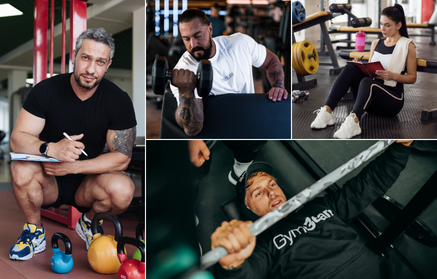
Add a comment